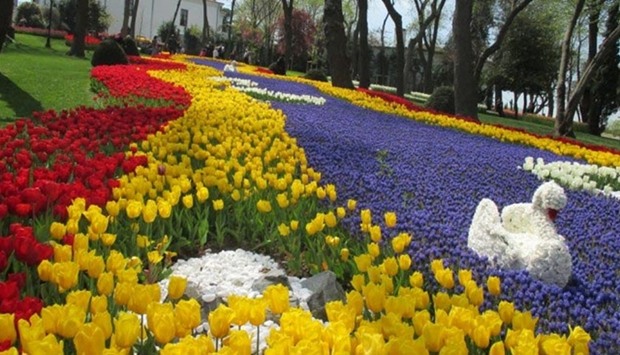Istanbul's annual tulip festival has brought swathes of colour to the Turkish metropolis, with millions of tulips in dozens of varieties to be seen at some of Istanbul's most historic sites, including outside the Hagia Sophia museum.
The Hagia Sophia was once the grand cathedral of the Byzantine Empire and was later converted to a mosque under the Ottomans.
Nearby Gulhane Park, which sits at the bottom of the hill below the Topkapi Palace, built by the Ottomans after they conquered Constantinople, has seen its gardens come alive in red, yellow, violet, blue and white.
The 12th annual festival, organised by the Istanbul Metropolitan Municipality, is quieter this year, with Turkey experiencing a sharp decline in tourists.
The number of foreign visitors to Istanbul fell sharply to 9.2mn in 2016, a 25.9%t decline on the previous year.
With fewer bustling crowds this year, the tulip viewing is more serene and peaceful.
Tulips have a long history in what is now Turkey. The Ottoman Empire went through a relatively peaceful and prosperous era in the 18th century, which came to be known as the Tulip Period, during which there was a craze for the flower.
Tulips were brought to Europe - initially to Vienna, it is thought - from the Ottoman Empire, which had imported them from Asian mountains even further to the east.
The festival is spread out across the city, on both the European and Asian sides, and will run until the end of the month.

The tulip festival is spread out across Istanbul.


